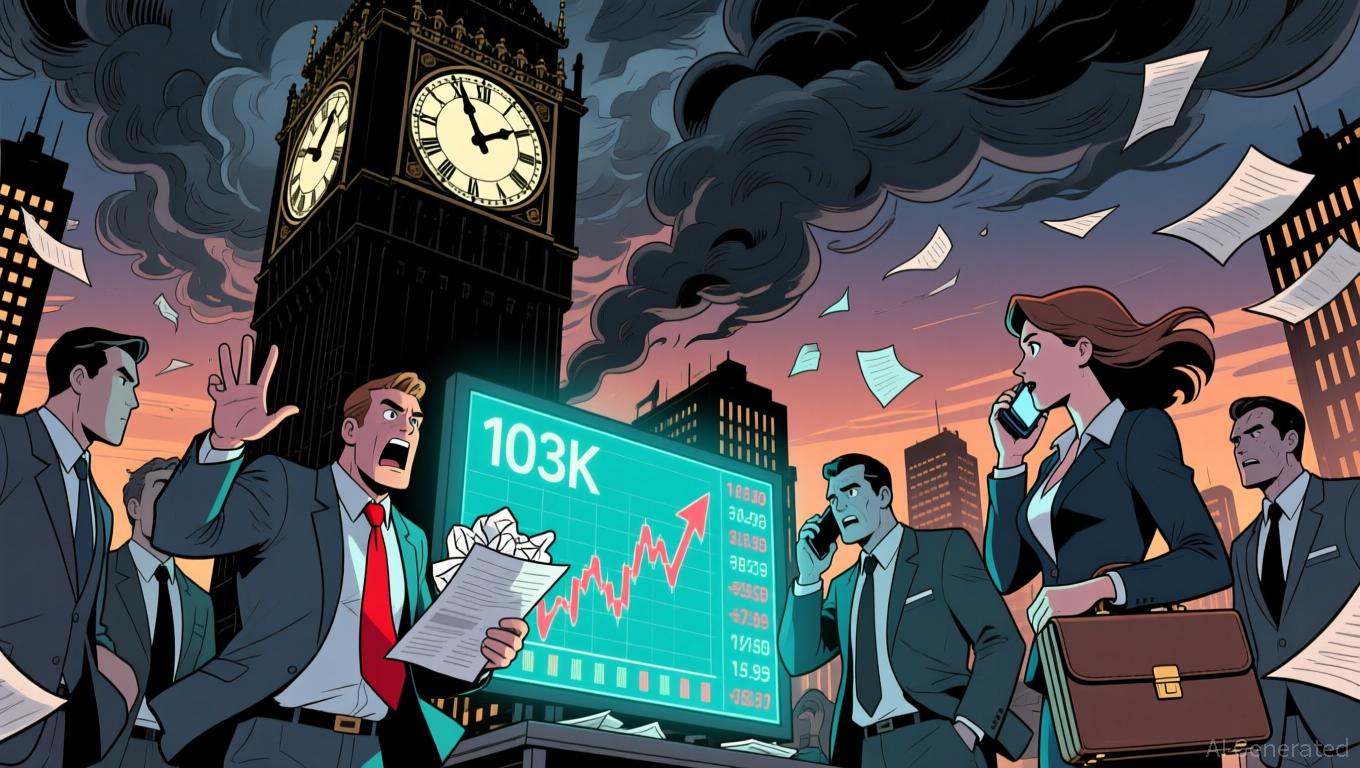Stellar News Today: XLM Battles at $0.2705—Major Players and Sellers Face Off at Crucial Resistance
- Stellar's XLM token saw volatile trading on Nov. 7, with price consolidating near $0.2702 after hitting key resistance at $0.2777 amid surging institutional volume. - Coordinated institutional buying of 2.5M and 1.5M tokens reversed bearish momentum, defending $0.2663 support while confirming $0.2777 resistance through 45.09M-token volume spikes. - Market remains divided as XLM struggles to break above $0.2815, with analysts warning renewed selling pressure could accelerate declines below $0.2709 amid mi
Stellar’s native asset,
The most significant activity of the session happened at 12:00 UTC, when trading volume surged to 45.09 million tokens—78% higher than the 24-hour average of 25.4 million—confirming resistance at $0.2777 and reinforcing support at $0.2663, as highlighted by CoinDesk. This surge reflected a battle between buyers and sellers, with institutional trades dominating the scene. Notably, coordinated purchases of 2.5 million and 1.5 million tokens during the 13:20–13:22 and 14:07–14:09 intervals reversed earlier downward
Technical experts have pinpointed a narrow $0.0109 trading corridor, with main resistance at $0.2777 and immediate support at $0.2663. The recent price movement has sparked discussions about possible continuation patterns, as XLM surpassed interim resistance points at $0.2690, $0.2700, and $0.2705. However, renewed selling emerged the next day, with XLM retreating from $0.2815—a significant resistance area where volume confirmed sellers’ presence—according to
Volume trends offered mixed signals. On November 7, the spike to 45.09 million tokens at $0.2777 highlighted strong resistance, while the following consolidation suggested buyers were defending the $0.2663 support, as reported by CoinDesk. In contrast, on November 6, volume dropped to just 18% of the average during a reversal below $0.2815, indicating fading momentum and increased risk of falling below $0.2709, according to CoinDesk’s reversal coverage. Analysts observed that unless XLM breaks above $0.2815 with strong volume, it remains vulnerable to further losses, with the $0.2709–$0.2720 support range now under close watch.
The recent price action has also fueled debate over the relevance of technical indicators. While some traders point to TD Sequential signals as evidence for a possible bullish reversal, others argue that without a clear fundamental driver—such as a major partnership or regulatory news—the token’s upside is limited. The recent 60-minute move from $0.268 to $0.270, led by institutional trades, has complicated the outlook, with some analysts targeting the $0.2720–$0.2730 range for further consolidation, according to CoinDesk’s consolidation report.
Market sentiment is split. Bulls emphasize the confirmed support at $0.2663 and the coordinated buying during the November 7 rally as signs of strength, while bears caution that failure to sustain a move above $0.2815 could trigger renewed selling. “The current market shows a classic struggle between short-term traders and institutional investors,” one analyst remarked, noting that the $0.27 mark serves as a psychological support amid increased volatility, as CoinDesk reported on the reversal.
At present, traders are watching volume trends and key resistance areas closely. A breakout above $0.2815 could spark renewed bullish momentum, while a persistent drop below $0.2709 might speed up the decline toward the next support. As
Disclaimer: The content of this article solely reflects the author's opinion and does not represent the platform in any capacity. This article is not intended to serve as a reference for making investment decisions.
You may also like
Bitcoin News Update: Bitcoin’s Drop to $100k Highlights Short-Term Anxiety Versus Enduring Confidence from Institutions
- Bitcoin fell below $100,000 in Nov 2025 amid geopolitical tensions and profit-taking, wiping $1.3B in crypto liquidations. - Technical indicators showed bearish momentum, with whales selling 38.4k BTC while retail traders bought 415 BTC. - Michael Saylor predicted $150k BTC by year-end, citing institutional adoption, as investors shifted to altcoins like AlphaPepe. - Miners like MARA doubled Bitcoin reserves in Q3, but stocks dipped amid macroeconomic uncertainties and volatile price swings.

Vitalik Buterin Backs ZKsync: Driving Layer 2 Expansion and Unlocking Investment Opportunities
- Vitalik Buterin's endorsement of ZKsync's Atlas upgrade validates its technical innovation, boosting institutional interest and investor confidence. - The upgrade enables direct Ethereum liquidity access, achieving 15,000+ TPS and near-zero fees, positioning ZKsync as a key Layer 2 infrastructure. - Buterin's backing triggered a 120% token price surge and $600M market cap, highlighting its potential to dominate Ethereum's scaling solutions. - ZKsync's tokenomics overhaul prioritizes buybacks and staking

Zuckerberg: *The Social Network* Captured My Mannerisms, But Not My Life
- Mark Zuckerberg praised *The Social Network* for accurately replicating his Harvard-era casual style, including owned T-shirts and fleece jackets. - He criticized the film's narrative, calling its portrayal of his Facebook motivations and fabricated romantic subplot "completely wrong." - Zuckerberg highlighted Hollywood's struggle to grasp tech entrepreneurship's intrinsic appeal, emphasizing real-world innovation vs. dramatization. - Despite narrative disagreements, he bought the film's iconic "Ardsley

Zcash Halving Scheduled for November 2025: Triggering Market Fluctuations and Attracting Speculative Investments
- Zcash's November 2025 halving will cut miner rewards by 50%, mirroring Bitcoin's deflationary model and tightening supply. - Historical data shows post-halving price surges, with Zcash's price rising 472% since October 2025 amid $137M institutional inflows. - Privacy-centric features (30% shielded supply) and speculative demand drive volatility, but regulatory risks and competition pose challenges. - Market dynamics highlight tension between scarcity-driven optimism and macroeconomic uncertainties affect
